Minimal costs (MinCost) routing for Cars, Vans, Trucks with AI based travel time estimations for EUROPE
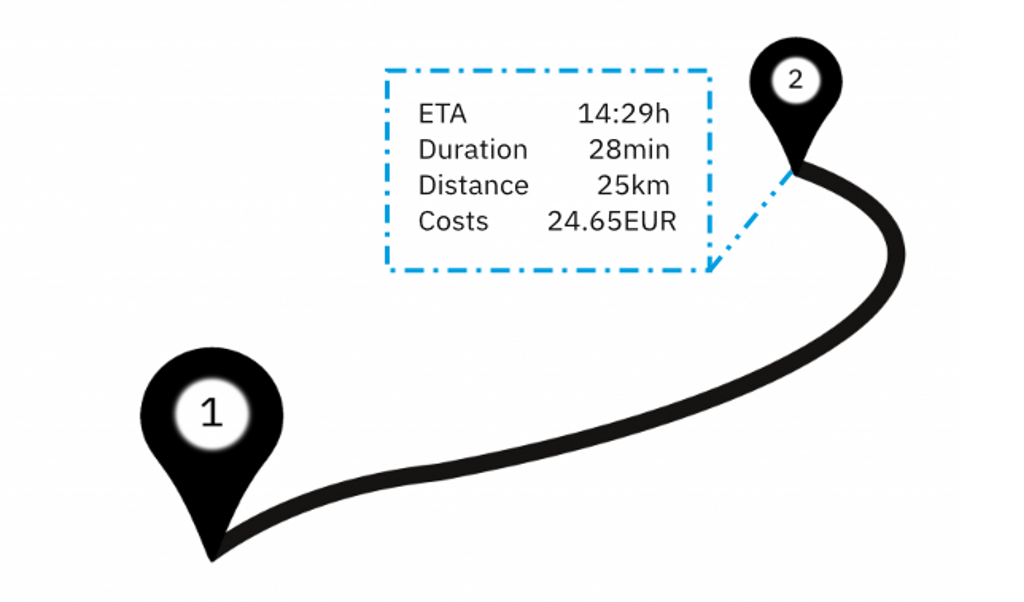
Route planning seems to be a problem that has actually been solved, get from A to B. Value-based routing is a new approach. While the shortest or fastest routes can be planned in the consumer environment, the situation is different in a commercial environment. It’s all about costs! Value-based routing uses our novel MinCost approach with cost factors that can be different for each vehicle, employee and trailer combination; the approach evaluates routes and minimizes costs, rather than distances. Two man crews, 3.5t or 40t vehicles with or without toll are all accounted for differently and in many cases result in completely different routes. Furthermore, current construction sites are taken into account in the planning.
Calculating the ETA (Estimated Times of Arrival) and thus the travel time is one of the most difficult areas in route planning. We have developed a completely new approach for this. And we’re mighty proud of it. We use a new artificial intelligence model we developed ourselves, which learns on the basis of historical traffic flows and can estimate the journey times of cars, vans and trucks with extreme precision; especially important if you don’t plan routes for the moment “now”, but for a point in time in the future, e.g. for freight rates, dates for ramps, etc. Only “Live-Traffic”-based systems, even planned a few hours in advance, are no longer sufficient. Our routing & navigation uses complex data fusion between AI predicted traffic and Live Traffic data for distances under 2h, above 2h we only use AI predicted traffic flows.
While almost all roads are suitable for cars, there are many restrictions for trucks. Bridge heights, bridge loads, passage bans are all issues that need to be considered. Truck driving profiles and speeds differ enormously from cars or vans. Applicable for hazardous goods/hazmat.
We included Germany, France, Poland, Italy, Portugal, Austria, Switzerland, Check Republic, Slovakia, Slovenia, Spain, Bulgaria, Hungary in tolls.
Explicitly not considered are the flat toll costs, that are time based (1day, 1 week etc.) countries like Denmark, Sweden, Norway, Netherlands, Latvia, Lithuania & Romania.
More countries for tolls will follow.
Navigation instructions available in English, Polish, Romanian, Russian, Italian, French, Arabic, Serbian, Croatian, Bosnian, Slovak, Czech, Spanish, Bulgarian, Turkish, Greek, Danish, Hungarian, Japanese, Chinese.
Not yet suitable for low loaders or heavy loads over 44tons!
Product Features
AI based routing engine ETAs
Travel time estimation with a focus on planning
Reliable ETAs (Estimated Times of Arrival) are the basis for any for of planning. Calculating the ETA and thus the travel time is one of the most difficult areas in route planning. To do this, we have expanded our routing engine and developed a proprietary artificial intelligence model that uses “machine learning” methods and that learns on the basis of traffic flows and can estimate the travel times for cars, vans and trucks with high precision, especially important when planning routes not for “now” but for some point in the future; even planned a few hours in advance, “live traffic” based systems are useless. With a better prediction of the travel time, routes and tours can be planned much more realistically and driving and rest times of drivers can be respected. Costs can be estimated better and ramp times or other time windows such as opening times can be met. The AI has already been trained with millions of data points and continues to learn more. We are particularly proud of this feature. Tests have shown that our AI is already so good that it even has less than 3% deviation for the “now” point in time compared to the world’s leading routing engine with live traffic, e.g. on 6h driving time 3min and for ETAs for some point in the future far more superior.
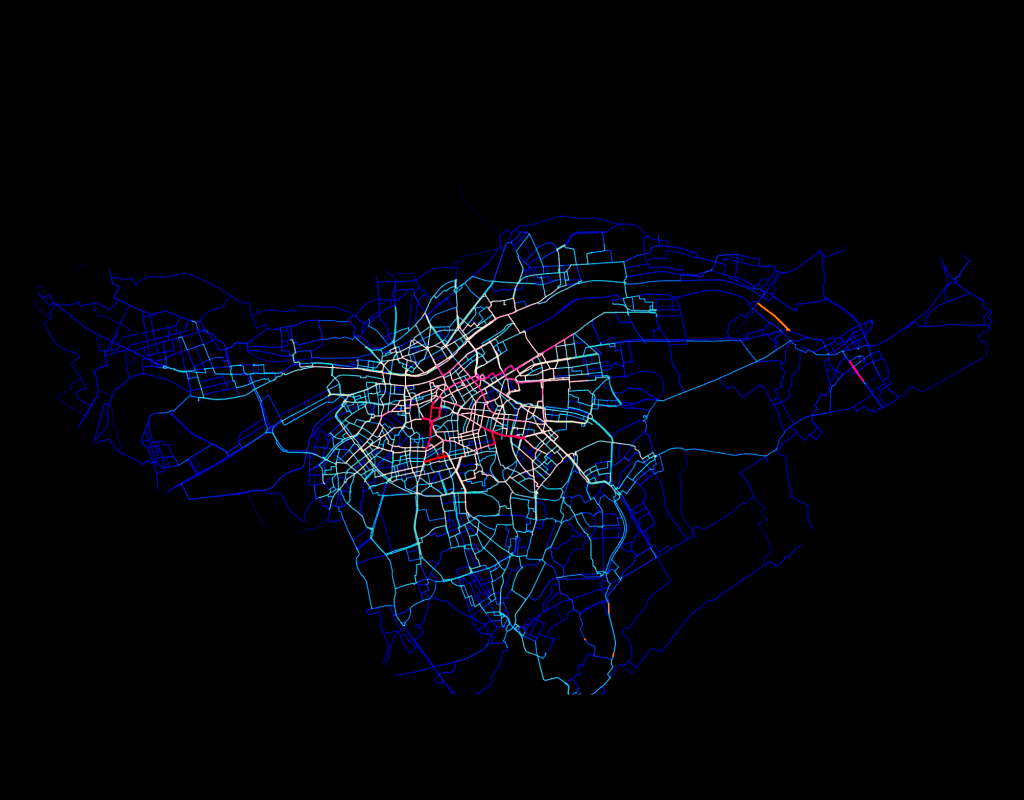
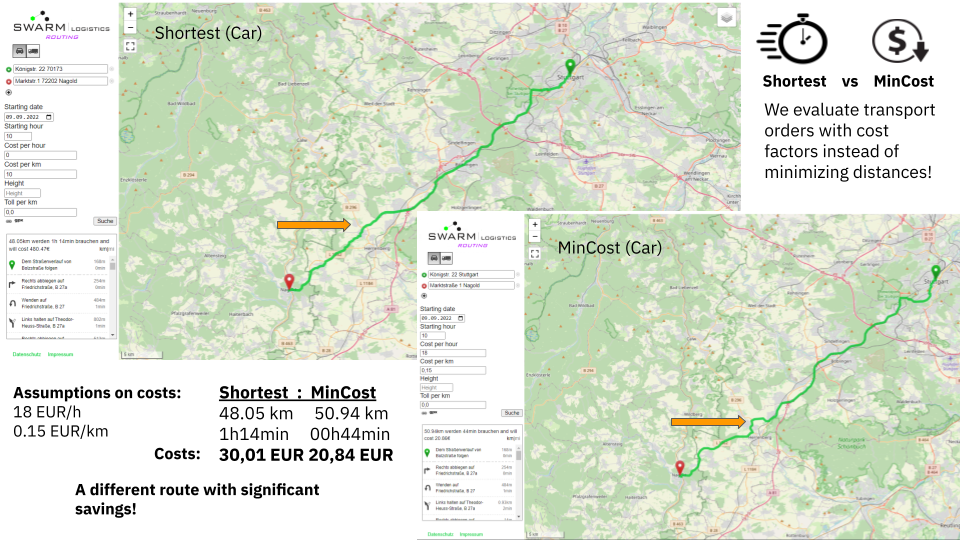
Shortest vs. MinCost
With value-based routing, we evaluate transportation orders and calculate the route with the lowest costs. Depending on the vehicle, the variable costs are made up differently. Based on the cost factors EUR per km and EUR per hour you have stored, the routing engine calculates the costs and the lowest-cost route for the specific vehicle.
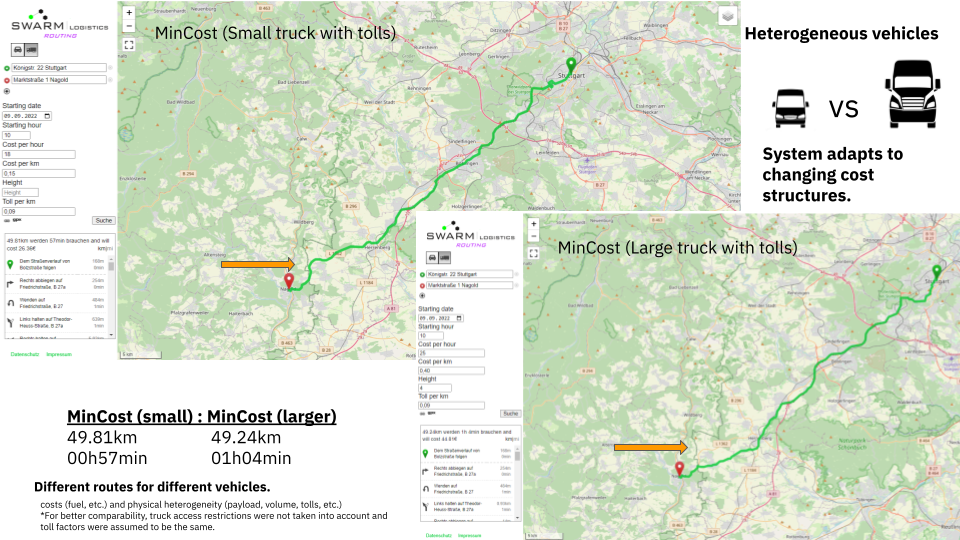
heterogeneous vehicles
With value-based routing and the MinCost approach, heterogeneous vehicles can be considered exactly. A car has a different cost structure and therefore a different optimal route compared to a truck. The same applies to a 7.5t and a 40t truck. With the MinCost approach you no longer through away money unnecessarily and plan better.
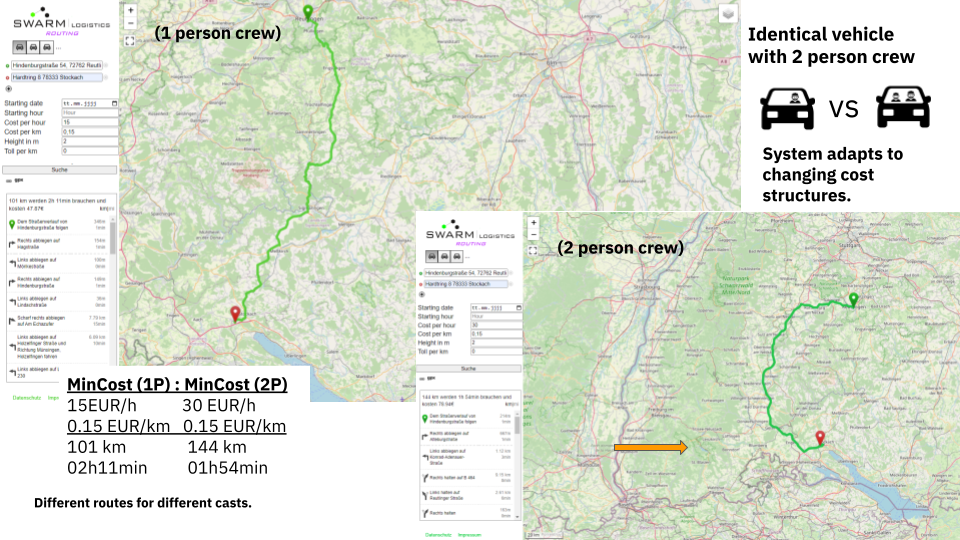
heterogeneous crew
With value-based routing and the min-cost approach, heterogeneous crews can be mapped exactly. A 2-man crew has a different cost structure and therefore also a different optimal route compared to a 1-man crew despite the identical vehicle.
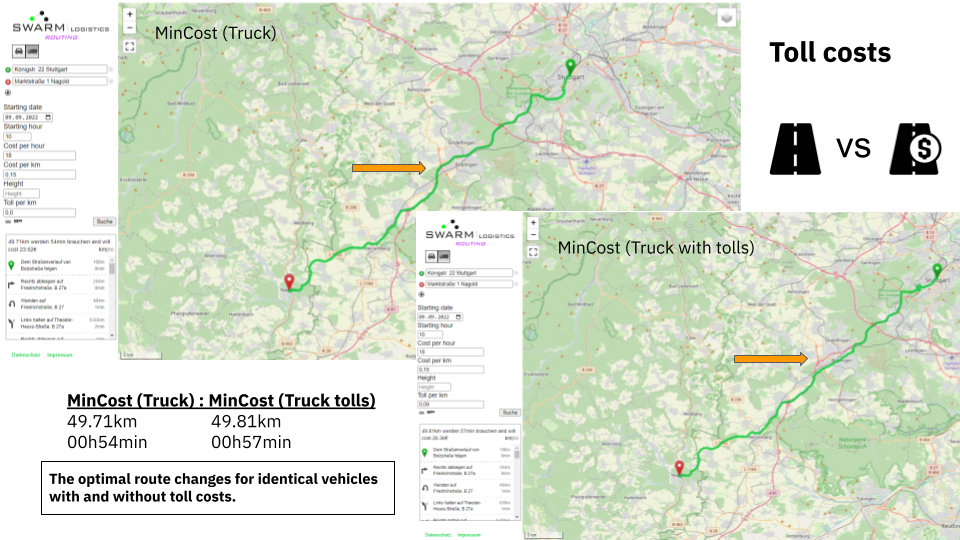
toll costs
Trucks have to pay a toll on certain roads. While route planners normally ask the user whether toll roads should be used or not, value-based routing behaves differently. You specify the toll cost factor per km (depending on your vehicle) and the routing engine calculates the route taking into account the toll cost and minimizing the total cost. Toll roads are not avoided, but rather driven, or not if they reduce the overall costs. Most European countries.
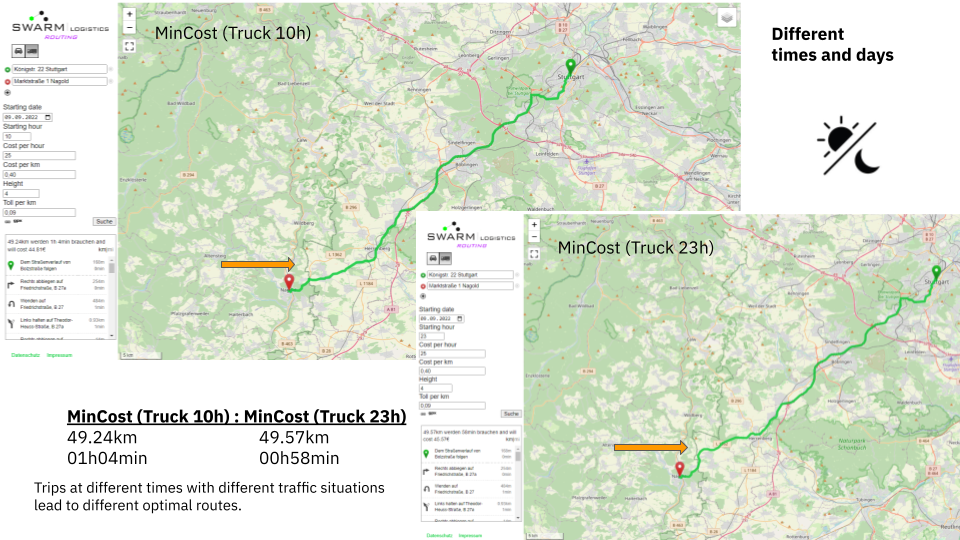
Time horizon of the planning
Route planning is not only required for the moment “now”, but very often for planning for a point in time in the future, e.g. as a basis for freight rates or for a customer appointment in the future. It is not enough to only consider “Live Traffic” data in route planning. Even for longer distances or a standard 8-hour shift, the traffic situation changes and the initial plans are no longer correct. Our routing engine uses our powerful in-house developed AI that predicts traffic flows and thus provides different routing for different times “now” or in the future.
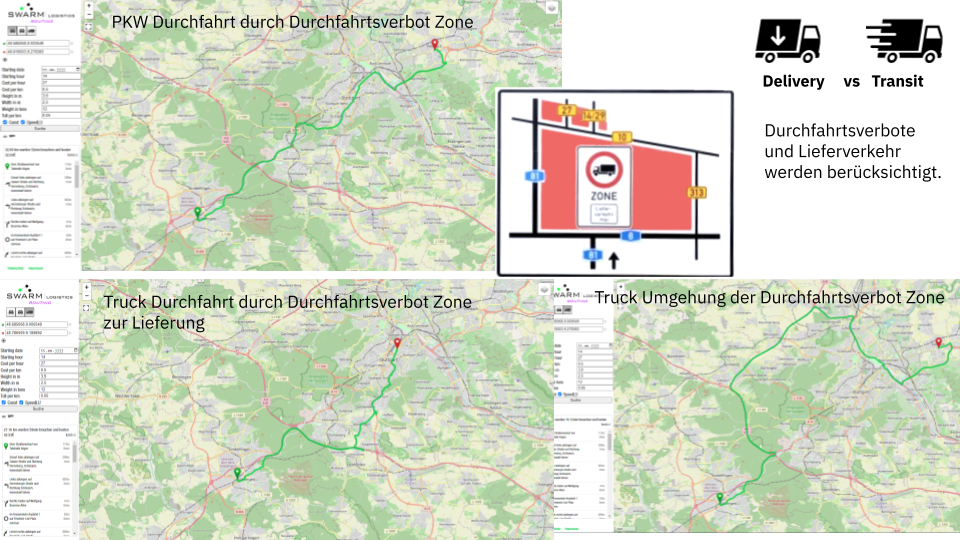
Truck bans and transit zones
Heavy goods vehicles (trucks) are subject to transit restrictions, partly because of their height, width, dangerous goods, permissible total weight, etc. Residential and delivery traffic is free, but only if the delivery is within this zone. While individual road sections are usually closed to trucks, there are also large-scale no-through zones or no-transit zones. Our routing engine accounts for most of these zones differently depending on whether you are passing through or have a delivery in the zone. In some cases, the recommendation networks of the cities are also taken into account.
(Night transit restrictions and environmental zones not yet covered).

Curve speeds and turns
We take the curve and turning speeds into account when selecting the route in the routing & navigation as well as in the ETA calculation. Passenger cars and trucks have different characteristics when turning and cornering. This feature has a big effect and segmented vehicle classes can be mapped, allowing completely different route calculations to be carried out for cars and trucks.
DEMO – Value-based routing for trucks with cost calculation, different ETAs for different days and time with truck transit restrictions and comparison to a car profile.
Convince yourself and test a simple online version.
